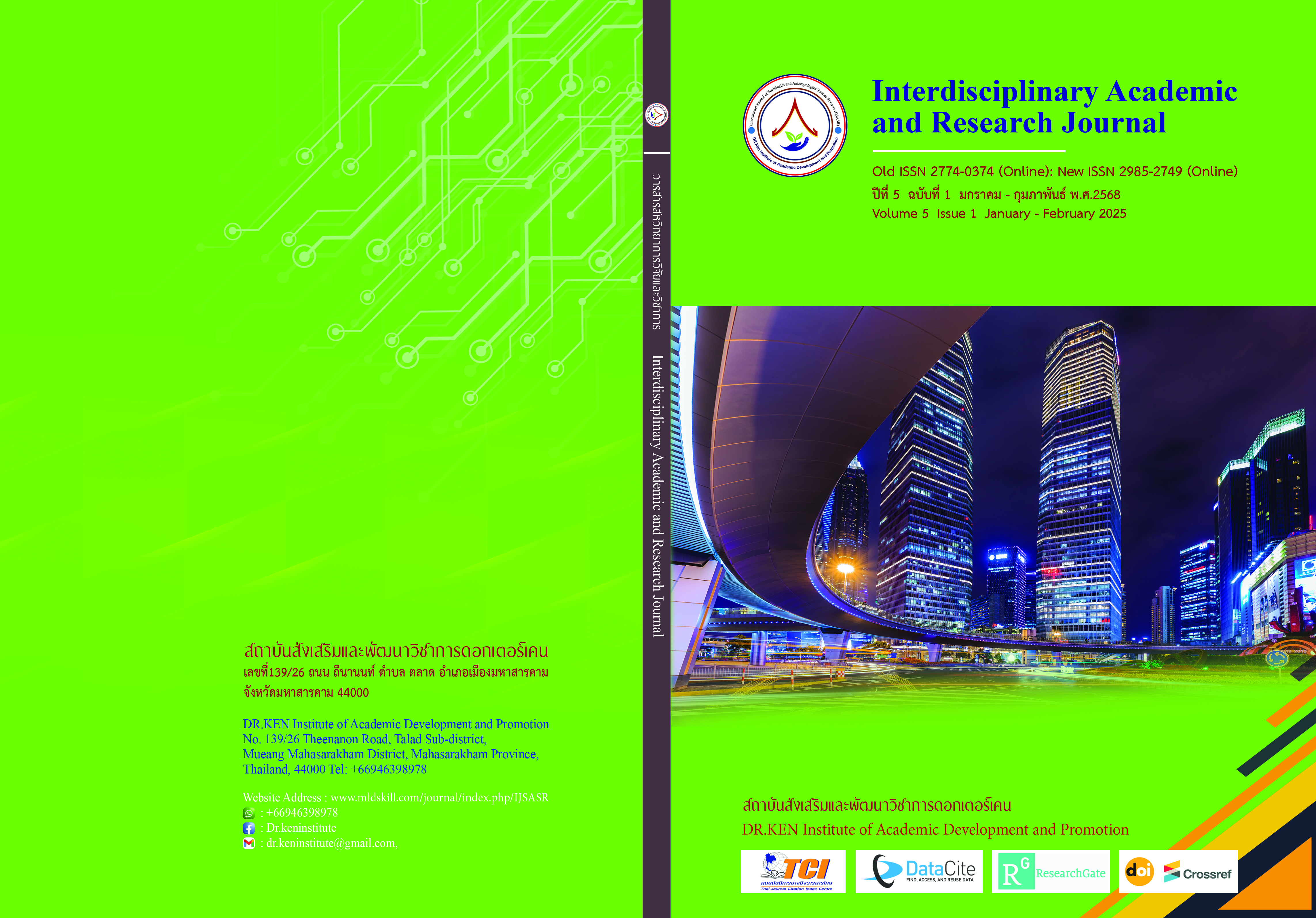Provision of Arts and Craft Activities Leftover Materials to Promote the Attention of Young Children
DOI:
https://doi.org/10.60027/iarj.2025.279970Keywords:
Arts and craft activities, Left over materialsAbstract
Background and objectives: organizing art activities is an effective form of the learning experience. Interesting for children and is consistent with the guidelines for developing attention and focus skills. By performing activities Then complete the activities according to the goals you set. The purpose of this research was to study the effectiveness index of organizing art activities using waste materials to promote the attention and concentration of early childhood children and to compare the attention and concentration of early childhood children before and after organizing art activities using waste materials.
Research method: The target group is 25 preschool children, male and female, aged 3–4 years, who are studying in the first year of kindergarten. The tools used include 1. A plan for organizing art activities using leftover materials to promote attentive and focused behavior in early childhood children 2. Observation model for the attentive and focused behavior of early childhood children. Data was analyzed by determining the effectiveness index, mean, and standard deviation.
Research results: (1) The effectiveness index of the art activity plan using waste materials to promote attentiveness of early childhood children is equal to 0.7307, indicating that early childhood children have increased attentiveness skills. Representing 73.07 percent (2) early childhood children had a higher mean of attentiveness and concentration skills after the experiment (μ = 23.64, good quality level) than the experiment (μ = 14.52, fair quality level), reflecting the belief that the organization of art activities by Use leftover materials Can be used to promote concentration in early childhood children.
Conclusion: The research found that early childhood children who received art activities using waste materials have average skills. Paying attention after organizing activities. It is at a better level (μ = 23.64, σ = 0.95) than before organizing the activity (μ = 14.52, σ = 1.12). Therefore, organizing art activities using leftover materials. As a result, early childhood children developed attentiveness and concentration skills up to 73.07 percent. It is believed that this activity plan is an effective option for promoting attentiveness in early childhood and has a statistically significant effect on the effectiveness index.
References
ช่อทิพยวรรณ พันธุ์แก้ว. (2537). สมาธิเด็กสู่ความเป็นอัจฉริยะ. กรุงเทพฯ: ต้นธรรมสำนักพิมพ์.
นวลจันทร์ จุฑาภักดีกุล, ปนัดดา ธนเศรษฐกร และ รพิน เลิศอาวัสดา. (2560). การประชุมวิชาการการพยาบาลกุมารเวชศาสตร์ เรื่อง การประเมินพัฒนาการด้านการคิดเชิงบริหาร (EF) ในเด็กปฐมวัย ครั้งที่ 29. กรุงเทพมหานคร: สถาบันวิจัยระบบสาธารณสุข.
นวลจันทร์ จุฑาภักดีกุล. (2560). Executive Functions- EF กับความพร้อมทางการเรียนในเด็กปฐมวัย. นครปฐม: ศูนย์วิจัยประสาทวิทยาศาสตร์สถาบันชีววิทยาศาสตร์โมเลกุล.
วรสิทธิ์ ศิริพรพาณิชย์. (2556). การประเมินความตั้งใจจดจ่อโดยการตรวจดลื่นไฟฟ้าสมองและการประยุกต์ใช้ในเด็กที่เป็นโรคชนสมาธิสั้น. วารสารการแพทย์และวิทยาศาสตร์สุขภาพ, 20 (1): 4-12.
วิรุณ ตั้งเจริญ. (2539). ศิลปศึกษา. กรุงเพมหานคร: โอเดียนสโตร์.
สถาบันอาร์แอลจี. (2559). พัฒนาทักษะสมอง EF ด้วยการอ่าน. กรุงเทพมหานคร: ไอดี ออล ดิจิตอล พริ้นท์.
สำนักงานกองทุนสนับสนุนการสร้างเสริมสุขภาพ และสถาบัน RLG. (2561). เอกสารประกอบหลักสูตรการศึกษาขั้นพื้นฐาน พุทธศักราช 2551. กรุงเทพมหานคร: คุรุสภา ลาดพร้าว.
สิริพรรณ ตันติรัตนไพศาล. (2545). ศิลป์สำหรับเด็กปฐมวัย. กรุงเทพมหานคร: สุวิริยาศาลน์.
อารีย์ ชูมณี. (2546). การศึกษาเปรียบเทียบผลสัมฤทธิ์ทางการเรียน ความคิดสร้างสรรค์และมนุษยสัมพันธ์ของนักเรียนชั้นมัธยมศึกษาปีที่ 3 ที่เรียนวิชาสังคมศึกษาโดยการสอนด้วยวิธิสตอรี่ไลน์และการสอนโดยใช้กระบวนการกลุ่มสัมพันธ์. ปริญญานิพนธ์การศึกษา มหาบัณฑิตกรุงเทพมหานคร: มหาวิทยาลยศรีนครินทรวิโรฒ.
Downloads
Published
How to Cite
Issue
Section
License
Copyright (c) 2025 Interdisciplinary Academic and Research Journal

This work is licensed under a Creative Commons Attribution-NonCommercial-NoDerivatives 4.0 International License.
Copyright on any article in the Interdisciplinary Academic and Research Journal is retained by the author(s) under the under the Creative Commons Attribution-NonCommercial-NoDerivatives 4.0 International License. Permission to use text, content, images, etc. of publication. Any user to read, download, copy, distribute, print, search, or link to the full texts of articles, crawl them for indexing, pass them as data to software, or use them for any other lawful purpose. But do not use it for commercial use or with the intent to benefit any business.
















.png)


